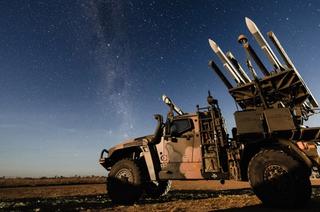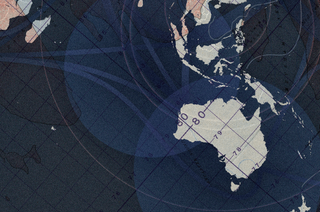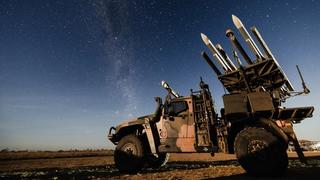Overview and executive summary
Under defence policy planning guidance, the Albanese government has adopted a two-year cycle of review for the delivery of a National Defence Strategy and an Integrated Investment Plan. This is designed to allow the government of the day to reassess strategic and investment priorities informed by an assessment of Australia’s strategic circumstances and its defence capability needs. This provides a clear policy framework to assess and fill any defence capability gaps that arise.
Prime Minister Anthony Albanese has repeatedly indicated that the Australian Government will fund capability gaps in the Defence portfolio. In response to demands from Australia’s US ally to increase defence spending to 3.5% of GDP, the Prime Minister noted his approach to defence policy: “what you should do in defence is decide what you need, your capability, and then provide for it. That’s what my government’s doing. Investing in our capability and investing in our relationships.”1
At the National Press Club in June 2025, Prime Minister Albanese noted in relation to defence spending that: “What do we need? What is the capability we need to keep us safe? Our capability will always be supported, any submissions, by myself as Prime Minister. Because our first order is to keep us safe and we do that through capability… We will always provide for capability that’s needed.”2
It is clear from the Prime Minister’s statement that an assessment of capability for the Defence of Australia is the foundation of his government’s approach to Defence funding, not arbitrary percentages of GDP. The Albanese government is committed to assessing defence spending through the defence policy planning process, culminating in a new National Defence Strategy in 2026.
Prime Minister Albanese also noted the focus for this process is identifying any potential capability gaps and filling them. In response to a follow-up question from Sky News journalist Andrew Clennell during the National Press Club address in June 2025, the Prime Minister noted, “I’ve made it very clear, we will support the capability that Australia needs. I noticed in your question you haven’t put forward one thing — one thing — that we should be investing in that we’re not investing in.”3
For the Australian Defence Force, the lack of effective ground-based air defence and an Integrated Air and Missile Defence system represents the most critical gap in the achievement of Australia’s strategic goals.
The pathway for additional investment is therefore well-defined: the identification of a clear capability need for the Australian Defence Force as part of National Defence. In reviewing current Defence investment priorities and strategic guidance, there is one very obvious capability gap that is currently not prioritised and critical to defence capability and the nation’s defence strategy: Integrated Air and Missile Defence (IAMD).
IAMD is a critical part of effective deterrence and essential for the Australian Defence Force (ADF) to carry out a military strategy of denial as directed by the 2023 Defence Strategic Review (DSR) and endorsed by the 2024 National Defence Strategy (NDS). Lessons from contemporary conflicts have identified that ground-based air defence (GBAD) is essential to an effective IAMD system.
For the ADF, the lack of effective ground-based air defence and an IAMD system represents the most critical gap in the achievement of Australia’s strategic goals.
In 2023, the DSR stated that the ADF was ‘not fit for purpose’ for the strategic environment that had evolved in the Indo-Pacific over the preceding decade. IAMD was specifically singled out by the DSR as an area that was lacking in ADF capability. It noted that “Defence must deliver a layered integrated air and missile defence (IAMD) operational capability urgently” and that “missile defence capabilities should be accelerated.” The Independent Leads of the DSR noted that Defence had not prioritised this capability appropriately:4
[W]e are not supportive of the relative priority that the program was given. The program is not structured to deliver a minimum viable capability in the shortest period of time but is pursuing a long-term near perfect solution at an unaffordable cost.
When the Australian Government announced its implementation plan for the DSR, this sense of urgency for IAMD was not reflected. However, six priority areas were identified for implementation: the AUKUS submarine program; long-range strike and missile manufacture; ADF’s ability to operate from Australia’s northern bases; workforce development; partnership with industry; and deepening diplomatic and defence partnerships.5
The continued deterioration of the Indo-Pacific strategic environment and the lessons from the conflicts in Ukraine and the Middle East since the DSR was released have made it clear that IAMD needs to be reassessed. In the implementation plan for the 2024 NDS and Integrated Investment Plan (IIP), it was clear that IAMD has not been acted on with the priority allocated to it in the 2023 DSR or as suggested in previous defence strategic guidance going back to 2016. In addition, the focus of the IAMD investment program within the IIP was not restructured to focus on missile defence as the DSR recommended.
Under the 2024 NDS and IIP, the current investment pipeline massively favours sensors, integration and command and control at the expense of active missile defence. At the same time, it pushes the funding for these capabilities into the latter part of the decade, where funding is only aspirational.
This means that the ADF has a growing capability gap. A gap that contemporary conflicts have highlighted is critical to homeland defence and force protection.
The centrality of IAMD to Australia’s evolving strategic landscape was highlighted by the Chief of Defence Force (CDF), Admiral David Johnston, in June 2025 when he acknowledged that the nation needs to be prepared for the possibility of prosecuting combat operations from its own soil. He described this as a “very different” approach to Australia’s military operations since the Second World War.
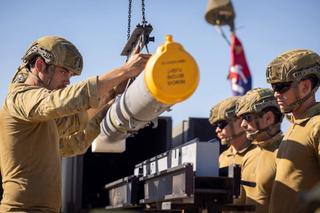
To provide a platform for the conduct of operations from Australia’s shores a robust ground-based air defence (GBAD) capability is the central core of homeland defence against air and missile threats. It is the cornerstone of a layered defensive system, providing a level of coverage and persistence that cannot be matched by air or naval capabilities.
A robust GBAD capability allows for the ADF to concentrate its air and naval assets to conduct counter-air and strike missions deep into the battle space, in support of air and missile defence or to achieve broader tactical, operational and strategic objectives. This is essential to providing depth to the defence of the Australian continent and the ADF’s strategically important northern base network.
Australia’s current GBAD capabilities are inadequate to meet contemporary threats and to provide for homeland defence or force protection to deployed forces. It lacks the scope and scale to support a theatre-wide IAMD system. This means that Australia’s approach to IAMD is less than the sum of its parts, as many of the parts themselves are missing.
In line with the DSR recommendations, the next iteration of the NDS and IIP Australia must expand in-service, off-the-shelf capability options to deliver an effective and layered system of GBAD capability to enable the ADF to field a robust IAMD system. This must include C-UAS capabilities, cruise missile defence, intermediate-range ballistic missile and hypersonic missile defence.
To deliver this system, the Australian Government must prioritise capability investment in key areas. This report provides both the strategic rationale for this investment in the 2026 National Defence Strategy and a roadmap towards the fastest and most cost-effective investments for a robust ground-based air and missile defence system — the missing element in the establishment of an effective ADF Integrated Air and Missile Defence capability.
Policy recommendations
- Prioritise IAMD and especially GBAD in the 2026 National Defence Strategy and Integrated Investment Plan.
- Accelerate and integrate the ADF’s GBAD capabilities in a tiered manner to provide practical solutions from counter-UAS capabilities and short-range air defence (SHORAD) through to mid-tier and ballistic missile defence.
- Expand the Army’s air defence capabilities by providing the requisite workforce and funding for GBAD. This should include the expansion of the number of air defence regiments in the Army and the integration of Army Reserve force soldiers and subunits into the Army’s GBAD capabilities.
- Prioritise in-service, off-the-shelf rapid delivery GBAD capabilities and investigate medium-term adaptive solutions.
- To ensure that the system is more than a sum of its parts and that it is integrated together in a theatre-wide IAMD system, Defence must fund effective integration as a priority effort.
Governance, IAMD architecture and program development
- Provide a new model of governance for IAMD, which ensures effective integration as a theatre system of systems.
- Transfer IAMD architecture design and integration to Joint Capabilities Group with requisite staff and funding to develop a short-term, medium-term and long-term program design
- Allocate necessary resources to the Vice Chief of Defence Group, including appropriate technical staff, to provide for effective IAMD integration, including systems assurance.
- Transfer program development for GBAD for mid-tier and ballistic missile defence to the Army.
Mid-tier Air Defence
- Rapidly acquire the extended range (ER) AMRAAM missile for the NASAMS system.
- Rapidly acquire additional NASAMS Fire Units, optimised for the use of the AMRAAM-ER missile — this includes CEA radars and Canister Launchers.
- Develop a mobile launcher for AMRAAM-ER based on the in-service Bushmaster Protected Mobility Vehicle, matching the current Hawkeye mobile launcher system for standard AMRAAM.
- Investigate the adoption of the SkyCeptor missile into the NASAMS system.
Air and Ballistic Missile Defence
- Rapidly acquire the US Patriot system with PAC-2, PAC-3 CRI and PAC-3 MSE missiles for the Australian Army to deliver an off-the-shelf proven BMD system.
- As a mid-term adaptive solution:
- Pursue the adoption of the Australian CEA Radar into the Patriot system, including the certification of the kill chain for PAC-2 and PAC-3 missiles. This will enhance the system’s performance and create an export market opportunity for Australia’s industry.
- Pursue the integration of Patriot Launchers and missiles into the Australian NASAMS system’s Fire Distribution Centres (FDC). This will improve systems integration, enable workforce reduction, and allow the deployment of mixed batteries of NASAMS with Sidewinder, AMRAAM, AMRAAM-ER missiles with Patriot missiles and launchers.
- Investigate the adoption of the next-generation US Army autonomous launching system.
Short and Very Short-Range Air Defence (SHORAD and VSHORAD)
- Acquire AIM-9x Missiles for Army’s NASAMS system as the current system is ‘fitted for’ but not ‘with’ these missiles.
- Introduce Skyranger air defence turrets onto the Australian-built Boxer Combat Reconnaissance Vehicles to provide a mobile air defence solution to the Army’s mechanised combined arms teams and for VSHORAD missions.
- Acquire the shoulder-launched Stringer missile system to provide for a soldier-portable air defence solution (MANPAD).
- Develop a highly mobile SHORAD system based on the Stinger missile paired with a remote weapons station for the Bushmaster Protected Mobility Vehicle, replicating the US Army Avenger System and/or M-SHORAD Striker vehicle system.
GWEO
Building on the Statement of Intent on Integrated Air and Missile Defense signed at the 2024 AUSMIN meeting, Australia should:
- Expand Australia’s GWEO mission to include the production of surface-to-air missiles through key componentry and eventually whole missiles.
- Improve local and regional missile readiness and preparedness for the ADF, US Forces and regional partners by developing Australia as a regional hub for the maintenance and sustainability of surface-to-air missiles through the maintenance of missile and the certification in Australia of test and evaluation capabilities for AIM-120 AMRAAM family of missiles (used by the RAAF and the Army’s NASAMS capability) and the Patriot PAC-2 and PAC-3 missiles.
- Identify with the US government and industry key supply chain blockages in areas such as seekers, warheads, and/or guidance systems for either the AIM-120 or the PAC-3 missile, for Australian companies to complement US production.
- Investigate, in line with Japan, the assembly of PAC-3 missiles in Australia.
- Develop a longer-term plan to produce either the AIM-120 AMRAAM family of missiles and/or the PAC-3 missile in Australia.
ASCA and DSTG
- Prioritise ASCA Mission and DSTG R&D programs on:
- the development of laser and microwave systems.
- development of a cost-effective and rapidly replenishable missile interceptor.
- Investigate priority cooperation areas in AUKUS pillar II on the application of:
- IAMD integration.
- Artificial intelligence for IAMD, including analysing and interpreting track data, and target identification for missile intercept allocation.
Introduction
The need to defend the homeland
In June 2025, the Chief of the Defence Force (CDF) for Australia, Admiral David Johnston, acknowledged that the nation needs to be prepared for the possibility of launching combat operations from its own soil, which he described as a “very different” approach to Australia’s military operations since the Second World War.6 This is an acknowledgment that in a major conflict or contingency, war may very well come to Australia’s shores.
This assessment responds to the rapidly changing strategic circumstances that Australia, the Indo-Pacific and the world are experiencing. As put by Deputy Prime Minister and Defence Minister Richard Marles, the nation is facing its “most challenging strategic environment since the Second World War.”7
These circumstances are a result of a range of changes to Australia’s strategic environment. In the period following the Second World War, Australia benefited from the United States’ provision of uncontested maritime supremacy in Asia and a relatively benign Indian Ocean region. Since 2013, the strategic circumstances in Australia’s region have undergone rapid change. The United States has entered a period of relative decline as other major powers, such as China and India, continue to rise in global economic importance. As such, the era of US hegemony has ended, replaced by a more multipolar Indo-Pacific. Internationally, the revisionist powers of Iran, Russia, China and North Korea have used this changing power dynamic to challenge the rules-based international order under which Australia has flourished.
War has engulfed Europe with Russia’s illegal and immoral invasion of Ukraine. Conflict in the Middle East has erupted on multiple fronts, including between Israel and Iran, and China continues to use military force and economic sanctions to coerce its neighbours to reshape the Indo-Pacific in its own image. China’s military expansion in recent decades is unprecedented in modern times. As Richard Marles has noted, “What we have seen from China is the single biggest increase in military capability and build-up in conventional sense by any country since the end of the Second World War,”8 “without strategic reassurance.”9 This also includes the largest nuclear buildup since the early days of the Cold War.10 China now fields the largest military in the world, including the largest navy by ship count, with over 400 vessels, and continues to expand its long-range strike options beyond the Indo-Pacific.
Defence of the homeland is now a significant priority for the Australian Defence Force and the nation.
In another significant development in mid-2025, Richard Marles acknowledged that “China’s ever expanding war machine poses the greatest risk to Australia and the region’s stability.”11 He also publicly acknowledged that “Australia’s continental geography would become an issue in the event of a US-China conflict.”12
Defence of the homeland is now a significant priority for the Australian Defence Force (ADF) and the nation.
The last time this was a serious consideration was during the Second World War, when northern Australia was a major target, which saw at least 111 air raids between February 1942 and November 1943. The first and most significant of these raids was on 19 February 1942, when 188 aircraft bombed Darwin across two raids, the first by carrier aircraft at 9:57 am and the second by land-based bombers at 10:40 am. This combined raid dropped “115,000 kilograms of bombs…two and a half times the number of bombs and 83 per cent of the tonnage dropped on Pearl Harbour on 7 December 1941.”13 It was followed up with air raids during 1942 and 1943 across northern Australia, including Exmouth Gulf, Broome, Port Hedland, Wyndham, Derby, Horn Island and Townsville, and the submarine raids on Sydney and Newcastle in June 1942.
A modern-day threat to Australia is not unrealistic. China’s continued use of military coercion in the region to achieve its political objectives represents, as the Australian Government has noted, a grave risk to the peace and stability of the Indo-Pacific. Military threats are based on a combination of capability [military hardware and platforms] plus political intent.14 Capability development is a very long-term, more difficult area of this equation for nations to develop. Intent is a political mechanism that relies on a combination of capability plus opportunity.
The People’s Republic of China’s (PRC) military capabilities are massively expanding and extend to the ability to conduct missile and air attacks against the northern region of Australia. While this is not to say Australia faces a certain threat, the nation’s defence policy and planning rely on a “coherent prioritization of the strategic risks a country perceives in its environment.”15 With the risk from the unprecedented expansion of PRC military capabilities being recognised by the Australian Government, the focus for the nation’s defence planning must be on the development of capabilities to defend the nation and its interests. This approach allows the Australian Government to focus defence policy on building the requisite military capability to reduce strategic risk, meaning that there is “a direct link between military capability requirements on the one hand, and strategic risks and strategy on the other.”16
With the risk from the unprecedented expansion of PRC military capabilities being recognised by the Australian Government, the focus for the nation’s defence planning must be on the development of capabilities to defend the nation and its interests.
ADF military capabilities must therefore manage the strategic risk. Key amongst these is the People’s Liberation Army Rocket Forces. This includes the DF-26 Intermediate Range Ballistic Missiles (IRBM) that can reach northern Australia from China’s artificial island bases in the South China Sea. Their new DF-27 IRBM, equipped with a hypersonic glide vehicle (HGV) warhead, is believed to have moved from development into deployment. This missile has a range of 5,000 km to 8,000 km and is “believed to be primarily [designed]…for regional conventional strikes during conflict.”17 The DF-27 brings virtually the entire Australian continent under risk.18
The People’s Liberation Army Air Force (PLAAF) H-6K bombers can range Australia with CJ-20 Land Attack Cruise Missiles (LACM) and Air-Launched Ballistic Missiles (ALBM). The PRC has also undertaken a major expansion of its submarine fleet, specifically its nuclear-powered guided-missile submarines (SSGNs). Over the last 15 years, the People’s Liberation Army Navy (PLAN) has built 12 new submarines, including four Type 093A Shang III class SSGNs, which provide a new class of anti-surface warfare and land-attack capabilities. The expansion of the PLAN’s SSN capability is part of its transition “from defense on the near seas to protection missions on the far seas.”19 It is estimated that China has built seven or eight Type 093B SSGN submarines, equipped with 12 vertical launch missile cells — including those for the YJ-21 hypersonic missile — in the past three years.
These developments were highlighted in a 2024 Lowy Institute report, which outlined the PRC’s growing military capabilities in the South China Sea. The report included a map that represents the effective reach of PRC military power. This map (see Figure 1) highlights the risks that Australia could face and the character of the changing regional strategic balance, not only in Asia but also in the eastern Indian Ocean.20 As the report noted, “China’s recent military development constitutes the greatest expansion of maritime and aerospace power in generations and is most obviously seen in its expanding long-range missile force, bomber force, and modernising blue-water navy.”21
Figure 1. The increasing reach of China’s strike capabilities
DF-21 and DF-26 mainland ranges measured from open-source estimates of associated PLA Rocket Force bases. All ranges are approximate given source limitations.
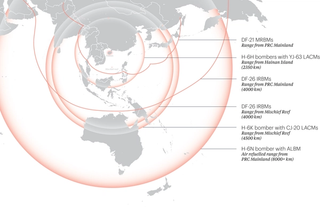
The map highlights the geographical proximity of northwestern Australia and Australia’s Indian Ocean territories to the maritime choke points at the hinge of the Pacific and Indian Oceans, including the South China Sea and the Philippine Sea, and onward to Taiwan and East Asia. They also highlight not just the criticality of this region but also the importance of the ADF’s network of northern bases for the defence of the area (and for force projection into the region), and the genuine risk of cruise and ballistic missile attacks to northwestern Australia in the event of a major regional contingency.22
In modern-day terms, the risk and potential threat to northern Australia are both synonymous with that of 1942 and very different. During the air raids on 19 February 1942, the Japanese struck shipping in the harbour, the wharf, the town and the Royal Australian Air Force (RAAF) airfields, killing 250, including 88 US sailors on the USS Peary, which was sunk in the harbour. At the time of this raid, the air defence of Darwin was concentrated around the Army’s ground-based anti-aircraft guns, principally 16 3.7-inch anti-aircraft (AA) guns and two 3-inch AA guns. There was no RAAF fighter aircraft available for the defence of Darwin at this time.
While the risk of a conflict in the Indo-Pacific remains, the contemporary threat profile is different, with long-range drones, cruise and ballistic missiles representing the most critical risks.
While the risk of a conflict in the Indo-Pacific remains, the contemporary threat profile is different, with long-range drones, cruise and ballistic missiles representing the most critical risks. If attacked today, current RAAF capabilities from bases in Darwin and Tindal, including F-35 Joint Strike Fighters and multirole F/A 18 Super Hornet aircraft, represent considerable defensive assets. This represents an inverse of the defensive focus in 1942; back then, the defensive effort fell to the Australian Army’s ground-based air defence (GBAD) system. Today, this is almost non-existent.
Currently, the Australian Army has very limited GBAD capabilities, with only two batteries of modern mid-tier National Advanced Surface-to-air Missile Systems (NASAMS) being brought into service. NASAMS is one of the world’s most advanced surface-to-air missile (SAM) systems, combat-proven against large UAVs, helicopters, aircraft and cruise missiles. Australia’s ground-based ballistic missile capabilities are, however, basically non-existent.
GBAD is only one component of air defence. Modern systems are built around the concept of Integrated Air and Missile Defence (IAMD). IAMD is an all-domain responsibility with the Air Force, Navy, Army, Cyber and Space domains all playing essential roles. As such, the focus of this paper is on the options for building and developing the hollowest section of Australia’s integrated air and missile defence architecture: the Australian Army’s GBAD capabilities.
GBAD’s capabilities are the most limited, and the capability development curve is the steepest in terms of both mass and required effects. Most significantly, the lessons of recent and current conflicts underscore the importance of robust GBAD capabilities as a core element of any modern IAMD system. The ongoing war in Ukraine, the clashes between Israel and Iran and other modern conflicts have all highlighted the increased range and lethality of Uncrewed Aerial Systems (UAS) and cruise and ballistic missiles.
GBAD represents a critical capability gap for Australia.
The Ground-Based Air Defence challenge: International developments 2019-2025
Evidence of the criticality of GBAD in modern conventional conflicts has been mounting in recent decades. Missile threats have proliferated, and airpower is undergoing fundamental changes with the development of a range of Uncrewed Aerial Systems (UAS) capabilities and changes to IAMD capabilities.
The Second Nagorno-Karabakh War
During the 44-day Second Nagorno-Karabakh War from 27 September 2020 to 10 November 2020, Azerbaijan’s deployment of drones exposed Armenia’s vulnerabilities in traditional air defence. This provided Azerbaijan with crucial advantages in reconnaissance, targeting and long-range strike capabilities beyond front lines. In particular, the Turkish-made Bayraktar TB2 “demonstrated the versatility of UAV platforms… In addition to providing identification and targeting data, the TB2s also carried smart, micro-guided munitions to kill targets on their own.”23
The use of drones in combination with artillery allowed Azerbaijan to target and disable Armenia’s air defences, leaving its military forces exceptionally vulnerable.24 Notably, the vulnerability of obsolete air defences to these new forms of attack was also evident. The use of Unmanned Aerial Vehicles (UAVs) proved extremely effective against larger, high-end air defence systems such as the Russian S-300 systems.
Key lessons/takeaways
The key lessons were the need for “full-spectrum air defence”, the lethality of UAS against traditional air defence systems, and the importance of “passive defence…” with a consideration of “new ways to camouflage and harden their forces… In an age of highly proliferated sensors and shooters.”25 The lessons from the Second Nagorno-Karabakh War, especially in the need for counter-UAS systems, had been apparent the year before with Iranian-backed Houthi rebel strikes on Saudi Arabian oil facilities.26 The September 2019 Houthi attacks cut Saudi oil production by 5.7 million barrels a day. They were part of a series of drone attacks over multiple months, which were effective due to legacy anti-missile and air defence systems not being designed to counter such threats.27
Iranian-Israeli Conflict 2024-2025
On 1 October 2024, Iran launched approximately 180-200 ballistic missiles, in two waves, as part of its Operation True Promise II. Most of these missiles, reportedly 90%, were intercepted.28 Israel has not confirmed the number of sites impacted by the strikes, but video and satellite analysis suggest that 20-30 missiles struck Nevatim air base, three struck Tel Nof air base, and at least two landed in Tel Aviv at Cinema City Glilot, Hod HaSharon.29
The effectiveness of the Israeli GBAD is well known. It provides a layered response comprising three critical elements. Firstly, the long-range Arrow System, which consists of Arrow 2 and Arrow 3 missiles, uses a “two-stage solid-fueled interceptor” aimed at defeating long-range ballistic missiles.30 The Arrow 3 system is designed to “destroy incoming ballistic missiles outside of Earth’s atmosphere, during their midcourse phase, before they descend toward their targets.”31
Secondly, a mid-tier system called David’s Sling, designed to defeat short-range ballistic missiles, large-calibre rockets and cruise missiles at ranges of 40 to 300 km.32 Finally, the inner-tier of defence is the Iron Dome system. This is a short-range system designed to defeat short and medium-range unguided rockets, which have been persistently launched against Israel in recent decades by Hezbollah and Hamas.
This system is supported and supplemented by Iron Beam, an experimental laser-based system designed to counter short-range rockets and UAS, as well as the Barak-8 (a surface-to-air missile system), used by the Israeli Navy. In addition, the United States has provided direct support to Israel through its own GBAD, mainly the US Army’s “Patriot PAC-3 (comparable to David’s Sling) and THAAD (comparable to Arrow 2)… the US Navy… Aegis and the SM-3 (comparable to Arrow 3) and the SM-6 (comparable again to Arrow 2)” missiles.33
The Israeli defences have proven remarkably effective over an extended period. From countering short-range rockets to the recent defeats of Iranian missile strikes over a persistent period.
US GBAD systems, especially the Patriot and THAAD, are in exceptionally high demand globally, making them one of the most heavily deployed capabilities in the US military. In 2015, the US Army’s air and missile defence forces were deployed in nine countries, and over the last decade, the demand has only increased.34 In 2023, the US Army had 15 Patriot Battalions (each comprising four batteries), with a further battalion in development, and was requesting an expansion of the force. The National Defense Authorization Act for Fiscal Year 2023 included that “legislation also provides Army leaders with the authority to grow the Patriot force up to 20 battalions.”35
Critical to Israel’s defence is a layered and IAMD approach. Their defences are both joint and combined. In the April 2024 attacks, “At least nine countries were involved in the military escalation — with projectiles fired from Iran, Iraq, Syria and Yemen and downed by Israel, the US, the UK and Jordan.”36 This demonstrates the critical importance of regional partnerships for a successful collective missile defence.37
Israel Defense Force (IDF) defences are also joint by design. Land-based systems are supported by aircraft firing air-to-air missiles, including 5th Generation aircraft such as the F-35, and ships firing naval-launched SAMs. Supporting these systems are cyber capabilities, space surveillance, and a network of land, air and sea-based radars and early warning sensors.
The backbone of the defence, though, is the ground-based systems. Only these systems possess the persistence and capability required to deliver on their primary mission of continuous air and missile defence. Naval ships and aircraft have other mission sets. Limiting strike aircraft and naval vessels to IAMD missions, especially homeland defence, vastly restricts their availability in times of conflict to other vital mission requirements, such as counterstrike, and renders them more discoverable and vulnerable by their restrictions to geographically locked-in defensive areas.
The Israeli defences have proven remarkably effective over an extended period. From countering short-range rockets to the recent defeats of Iranian missile strikes over a persistent period. In early June 2025, Israel began a wave of attacks on Iran under Operation Rising Lion, designed to respond to Iranian-backed attacks on Israel by Hezbollah and Hamas as well as to strike at Iranian nuclear facilities and long-range weapons. Iran responded to these attacks similarly to October 2024, firing 200 ballistic missiles supported by 200 drones. Given the distances involved, with Iran around 1,000 km from Israel, Iranian strikes were primarily based on medium-range ballistic missiles; high-speed, high-altitude threats that are difficult to track, engage and destroy. The Iranian attacks were also launched in waves with supporting UAS strikes to attempt to overwhelm the Israeli defences. Again, Israel’s defences withstood the Iranian attacks with an exceptionally high degree of proficiency. It reported that all the UAVs were destroyed, and most missiles were intercepted.38
As the Iranian strikes persisted over the following days, the defences held firm, with only a small number of missiles breaking through. One of the key factors in Israel’s defences in the June 2025 conflict was the IDF’s ability to undertake counter-air missions against the Iranian missile sites. This could only be achieved after the IDF was able to dismantle Iran’s IAMD system. This effectively meant that the IDF could attack the launch sites or the ‘archers’ rather than waiting to defend against their ‘arrows’ by focusing on shooting down missiles. The foundation for this approach was the release of the IDF air force to conduct strike missions inside Iran. This was only possible due to the strength of the IDF GBAD, which allowed Israel to always have ‘one foot on the ground’ for its missile defence, enabling it to strike out against its adversary at the source of the Iranian missile strikes.
As effective as the defences have been, they also suffer from the perennial missile defence issues: the limited number of interceptors available and the cost-curve issue — the cost of the incoming missile relative to a more expensive one to intercept it, creating an imposition on the defending nation.
As effective as the defences have been, they also suffer from the perennial missile defence issues: the limited number of interceptors available and the cost-curve issue — the cost of the incoming missile relative to a more expensive one to intercept it, creating an imposition on the defending nation. However, this is offset by the cost of the defended asset, whether in terms of lives (civilian or military) or military capability, such as an airbase, industrial facilities, headquarters or a naval task group.
Key lessons/takeaways
Noting this, the key takeaways from the Israel-Iran conflicts of recent years include the large quantities of defensive weapons required, particularly when seeking to intercept multiple targets; the importance of an integrated system; and the significance of the industrial base in producing GBAD systems and missiles.39 This conflict also highlighted the effectiveness of Israeli attacks on Iranian IAMD systems that paved the way for President Trump’s air attacks on Iranian nuclear facilities.
These lessons, though, are not necessarily universal, as one analyst remarked, “Beijing’s missiles would be more difficult to intercept than Iran’s and that the ability to strike back would be needed to deter a mass attack.”40 The PRC’s more capable military would mean that Chinese missile attacks would most likely be coordinated with anti-satellite strikes and cyberwarfare, both designed to complicate defences. “Western (integrated air and missile defence) systems in the Indo-Pacific would have a much tougher time defeating a large Chinese missile strike, comprising hundreds or even thousands of missiles, compared to what the Iranians are capable of.”41
Russia-Ukraine War
The ongoing war in Ukraine after Russia’s invasion provides another contemporary conflict reference point, demonstrating the effectiveness of GBAD systems. In early 2022, it was estimated that Ukraine was only capable of intercepting between 20 and 30% of Russian missiles. By 2023, it was estimated that this had risen to 90% due to the introduction of modern Western air-defence systems, such as the NASAMS and surface-launched IRIS-T systems, to the Ukrainian military. Ukraine has constantly sought an expansion of Western air defence systems. In July 2024, then-US President Biden announced, “The United States, Germany, the Netherlands, Romania and Italy will provide Ukraine with the equipment for five additional strategic air defense systems.”42
The ongoing war in Ukraine has also demonstrated the effectiveness of GBAD systems. The United States has provided over 1,000-man portable (MANPADS) Stinger missiles and a fleet of Avenger air defence systems (mobile Stinger launchers fitted to a Humvee chassis). One of the most effective systems has been the NASAMS air defence systems, which were initially delivered to Ukraine in November 2022 through the Ukraine Security Assistance Initiative.43 Spain, Sweden, Germany and Poland have also provided modern air defence systems.44
Aside from this, two of the most effective systems deployed in Ukraine have been the Norwegian NASAMS system and the US Patriot system. These two GBAD systems have proven to be complementary and mutually reinforcing. Both have different mission sets, with NASAMS being a highly effective mid-tier system against class-3 UAS, aircraft and cruise missiles, and Patriot being more effective against ballistic missiles and high-altitude, longer-range targets. These systems have become mutually supportive, with Ukraine consistently deploying them together, maximising their effects and minimising the vulnerabilities of each system.45
NASAMS
NASAMS has proven to be an exceptionally effective system in Ukraine, with a 94% effective hit rate. It is one of the core elements of their GBAD system, particularly against low-profile, map-of-the-earth Russian cruise missiles. Ukraine currently fields 13 complete batteries and parts of three additional batteries, with support of this capability coming from Norway, Lithuania, the United States and Canada.46
The system has also been used by Ukraine as a point defence against short-range ballistic missiles, even though this is not its primary air defence profile.47 “Around 60% of intercepted targets were cruise missiles, including the Kh-101, Kh-555, Kh-59, and Kh-69, as well as Kalibr and Iskander-K missiles,” the remainder being UAVs, mainly loitering munitions (suicide drones).48 Ukraine has linked up to 17 launchers to a single NASAMS fire distribution centre (FDC), which provides a highly effective Battle Management, Command, Control, Communications, Computers and Intelligence (BMC4I) system.49
The Patriot system
The United States agreed in October 2022 to send Ukraine the Patriot missile systems, which became operational in April 2023. As of 2025, Ukraine has received six operational batteries, two each from the United States and Germany, one from Romania and a composite battery from Germany and the Netherlands. Since deployment, the Patriot system has shot down Russian air-launched Kh-47M Kinzhal hypersonic missiles, capable of speeds between March 5 and Mach 10 (5,960 km/h).50 It has also shot down Su-34 fighters at over 160 km away, and intercepted missiles as far as 200 km away. It has also destroyed Russian ‘Iskander’ missiles and North Korean KN-23s.51 The Patriot system’s most effective missile is the PAC-3 MSE, an “endoatmospheric point defense system with a capability to intercept short-range tactical ballistic missiles, cruise missiles, and military aircraft…that uses hit-to-kill technology.”52 Lockheed Martin, which produces the missile, has hit a production rate of 550 missiles per year, with an expectation to grow to 650 per year by 2027. Currently, 19 countries operate the Patriot system, deploying over 250 fire units worldwide.53 The deployment of the Patriot system to Ukraine has enabled more advanced combat testing, resulting in “critically important software updates and improvements to the hardware.”54
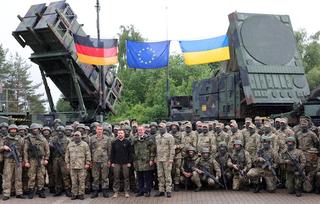
The Patriot system in Ukraine has been an “unmitigated success,”55 making it one of the key reasons why Ukrainian President Zelenskyy has consistently urged the provision of additional air defence systems. In April 2025, he requested that US President Trump allow him to purchase ten additional Patriot systems at an estimated cost of US$1.1 billion each.56 In June 2025, President Trump noted that he is considering Ukraine’s request during the NATO summit; however, he raised concerns about the need for these systems in Israel and also in the United States.57 This has highlighted two of the most critical issues for Ukraine and its western backers. The first is the high cost of missile interceptors with PAC-2 and PAC-3 Patriot missiles costing between $2 million and $4 million each.58 The second is that there is a critical shortage of global munitions production. This was reinforced by US Undersecretary of Defense for Policy Elbridge Colby’s unilateral decision to pause weapons transfers to Ukraine in July 2025 over concerns for low weapons stockpiles, including Patriot missiles.59
As demonstrated here, critical for Ukraine’s long-term strategic survival in the war was the GBAD’s ability to be “instrumental in protecting civil and military infrastructure.” Ukraine’s GBAD system has thus ensured the “ability to maintain and protect combat essential units and, ultimately, the war effort.”60
Key lessons/takeaways
Among the range of lessons emerging from Ukraine’s experience, the most seminal is the importance of mobility and dispersion for GBAD assets. Static defences proved exceptionally vulnerable, and in the first 48 hours of the conflict in Ukraine, Russia “succeeded in engaging 75% of static defence sites.”61 Only through “dispersing its (Ukraine’s) arsenals, aircraft and air defences” and the mobility of key assets such as SAM launchers and radars, were they survivable.62 “Not allowing Russia to easily target their GBADs, as could be done against fixed anti-air systems, has provided Ukraine the defensive edge.”63 Keeping its air defence systems intact, Ukraine solidified an anti-access/air-denial (A2/AD) area capability through the innovative use of its available systems.
The reinforcement of the layered system of defence is another key lesson. For example, larger air defence systems, such as Patriot and NASAMS, have targeted Russian aircraft at high altitudes, forcing them to fly low-level mission profiles, bringing them into range of Stinger MANPADS and Avenger short-range air defence (SHORAD) systems. MANPADS has also been successful in combating attack helicopters and Iranian-made loitering munitions. In this, a much larger and more technically sophisticated Russian air force has been unable to defeat Ukraine’s IAMD system. This was due to Ukraine’s deployment of highly agile and portable ground-based air defence (GBAD) systems. This has allowed its air force — “inferior qualitatively and quantitatively to Russia’s — to dissipate firepower, while preventing Russia from easily targeting its GBADs… [This has ultimately solidified] an anti-access/air-denial (A2/AD) area… [capability built through] layer upon layer upon layer utilisation of air defence systems… integrating multiple air defence systems, such as S-300s and MANPADS, Ukraine has created an A2/AD area that poses a high risk for the Russian Air Force.”64
Last of the key lessons from Ukraine has been the ability to integrate disparate systems, such as radars, missiles and launchers, from different countries and form them into a functional IAMD architecture delivering a layered defence, with minimal viable integration, driven by threat-based responses. These have mainly been military-off-the-shelf (MOTS) assets, using proven systems. This is a classic example of a minimal viable capability achieved through MOTS, rather than the search for a perfect solution.
Critical lessons identified from contemporary conflicts
A range of critical lessons can be identified for GBAD and IAMD from conflicts in the Middle East, the Caucasus region and Europe. These can be summarised as:
- The importance of a layered GBAD defence that covers counter-UAS to mid-tier cruise missiles, hypersonic missiles, and high-performance aircraft to short and intermediate range ballistic missiles.
- The criticality of GBAD for IAMD, providing persistence, deployability and a firm ‘one foot on the ground’ for defensive forces.
- The importance of GBAD to release air force and navy capabilities from close-in defence to undertake strike and counter-air missions deep into the battle space.
- The viability of military-off-the-shelf solutions and the importance of minimal viability capability and minimal viable integration. This is especially apparent in Ukraine with their adoption and integration of a range of different systems and GBAD solutions. This is also evident in Israel with the adoption of Patriot, THAAD and other systems into their IAMD architecture.
- The centrality of integrated. This begins with minimal viable integration and progresses to optimal integration, ultimately improving outcomes and performance.
- The critical importance of interchangeability of data, systems and information. As this is difficult to accomplish once a conflict breaks out, programs to achieve interchangeability during the competition phase are essential, as policy settings can be easily adjusted in conflict without pre-commitments to allies or partners.
- The importance of camouflage and concealment in a high-sensor and threat environment, including electronic warfare, as well as repair capabilities and functions for enhanced resilience.
- The global shortage of GBAD systems, including in the US Army.
- The vulnerability of fixed sites and systems, radars, launches, fire control, etc. They will be targeted early as a priority.
- The need for GBAD systems to be highly deployable and highly manoeuvrable.
- The high volume of interceptors required.
- The importance of industrial capacity.
- The importance of allies and partners in developing a network approach to IAMD, including industrial capacity and development.
- The need for research and development, especially to expand non-kinetic options for air defence and to develop systems that reduce the cost-to-kill ratio for interceptors against cruise and ballistic missiles.
- The importance of calculating the cost of the protected assets (civil and military infrastructure, capabilities, civilian and military lives, morale, national capacity, etc.) in the cost-kill-ratio for IAMD.
Integrated Air and Missile Defence and the Indo-Pacific
All lessons from recent conflicts in IAMD need to be assessed against the geography, strategic situation, threats and circumstances of the Indo-Pacific theatre of operations. There is no doubt that IAMD is a global defence issue and central to deterrence in the Indo-Pacific region.
US Ground-Based Air Defence investment
For the United States and its allies in the Indo-Pacific, the PRC is the pacing threat. In recent years, the primary responsible capability manager for air defence in the US system — the US Army — has placed an increased premium on these capabilities. In July 2025, the US Army announced the acquisition of four new Patriot battalions, one of which will go to Guam.65 These battalions will come with the new Lower Tier Air and Missile Defense Sensor (LTAMDS), which detects and defeats advanced threats, including ballistic and hypersonic weapons.66 This allows the Patriot system to operate more distributed. This will critically enhance capability as the US Army argues that the use of LTAMDS “greatly expands the range, the altitude, and [provides] 360 [degree coverage]… and fundamentally when you operationally employ it, it’s immediately doubling that capability… You would have the equivalent of about 30 Patriot battalions because instead of having to deploy as batteries, you can break them up and disperse them in a much more tactical way.”67
The July 2025 announcement is part of a dedicated approach to placing more importance on GBAD systems in the US Army. In March of 2024, the US Army allocated “[US]$602 million in research and development efforts for Integrated Air and Missile Defense and [US]$2.8 billion in procurement, which covers modernized capabilities beyond the Patriot system” for the 2025 fiscal budget.68
For the financial year 2026, the defence budget for the US Army reflects a clear strategic shift to air and missile defence systems (along with hypersonic weapons and unmanned platforms). Procurement in air and missile defence is up 14.2% on the previous financial year budget. The financial year 2026 budget provides for increased investment in the Patriot system, including an uptick in procurement of the PAC-3 Missile Segment Enhancement (MSE) and for the Patriot Modifications program (US$757 million).69 The Patriot Modifications program includes increases to the system’s “capability, readiness and sustainability,” logistical support, cybersecurity and electronic warfare.70 This budget includes PAC-3 MSE acquisition increases from 3,376 to 13,773 missiles, as approved by the Army Requirements Oversight Council Memorandum (AROCM) on 16 April 2025.
This budget includes US$1.3 billion for the LTAMDS radar system, which detects advanced threats, including ballistic and hypersonic weapons.71 LTAMDS has been selected by Raytheon as the new radar for the Patriot system, providing 360-degree coverage. It was approved in April 2025 to “double legacy Patriot radar capability” as part of the US Army’s modernisation plans,72 indicating that the Patriot system will remain in use for the long term.
Additional investments for GBAD included US$729 million for the mobile short-range system (M-SHORAD).73 This comes off the back of a 2024 investment into Indirect Fire Protection Capability battalions,74 UAS batteries, M-SHORAD battalions and an expansion of air and missile defence at the corps and division levels.75
The US Indo-Pacific Command and Integrated Air and Missile Defence
IAMD has long been a priority for the United States Indo-Pacific Command (INDOPACOM). In 2018, INDOPACOM released the “Integrated Air and Missile Defence Vision for 2028” (hereafter, IAMD Vision 2028), which seeks to secure the United States’ competitive advantage in the Indo-Pacific region and to establish an integrated defence network with allies and partners, as well as outlining an ambition for a regional integrated fire-control architecture. At the heart of this vision is the development of a common operating picture. This initiative builds off the 2014 Pacific Integrated Air and Missile Defense Center “designed to be a joint and multinational organization that educates and trains military and partner nation IAMD operators and planners.”76
For the past four years, the US Army has hosted a Multilateral Integrated Air and Missile Defence Summit. The December 2024 edition yielded various observations to advance IAMD in the Indo-Pacific region. Major Michael Parry, an Australian Army Artillery officer serving with the US Army’s 94th Army Air and Missile Defense Command as part of the AUS/US Military Personnel Exchange Program, observed at the 2024 summit that the outcomes underscored a critical shift in the threat environment. He noted that “the proliferation of hypersonic missiles, low-altitude cruise missiles, UAVs, and integrated attacks… [has eroded] traditional notions of sanctuaries… previously secure locations like Australia now require enhanced defensive strategies and capabilities.”77
With the absence in the Indo-Pacific of a NATO-like defence framework, Parry noted that participants emphasised:78
the need for robust data-sharing agreements, joint exercises, and persistent command and control architectures for real-time coordination [and that]… Space-based capabilities emerged as a crucial element of regional defence…Nations must integrate space-based missile warning, tracking, and countermeasures into broader defence frameworks.
IAMD Vision 2028 also aims to address the critical importance of cooperation between allies and partners, as well as the need to integrate systems. Its core concepts include the need for:79
a network architecture that all allies/partners can share and ‘any sensor, any shooter’ in the region can leverage to thwart an incoming threat… [and] area of responsibility (AOR)- wide integrated, netted, and layered sensor coverage.
Given the vulnerability of fixed sites and fixed defences, the IAMD Vision 2028 is built around concepts of agile basing for air forces. Overall, this vision aims to resolve capability and capacity issues through integration with allies and partners, by ‘synergising sensors and interceptors’ to increase capacity and survivability. One of the key lessons relevant to IAMD Vision 2028 from the conflicts in Ukraine and Israel is the need to focus on minimum viable integration, rather than letting the perfect be the enemy of the good.
Progress towards the integration of allies and partners as components of this vision has been made. The US Army has begun to field an Integrated Battle Command System (ICBS), while the US Air Force has developed an Advanced Battle Management System (ABMS) to replace legacy Command and Control (C2) systems. This system aims to collect, process and share data across all domains to enable better decision-making. In Australia, Project AIR6500 has focused on its Joint Air Battle Management System (JABMS) to strengthen situational awareness and improve interoperability with allies and partners.80 While a solid start, full-spectrum ‘plug and play’ integration is extraordinarily challenging and remains only an ambition.
Testing Vision 2028 Integrated Air and Missile Defence coordination in the Indo-Pacific
The ambition for plug-and-play integration is central to the medium- to long-term development of an integrated IAMD architecture for the Indo-Pacific. This approach was tested by the United States Studies Centre (USSC) in June 2025 in a detailed theatre-wide Table Top Exercise (TTX) involving former senior military officers and officials from the United States, Australia, Japan, the Republic of Korea and Taiwan. The TTX assessed the strategic value of allied IAMD capabilities through four vignettes featuring mixed-country teams generating IAMD architectures across a range of contingencies from limited to major conflict scenarios.
This activity was designed to assess various constraints (capability, budgetary and coordination) for a range of sensors and effectors, as well as coordination across countries. Players in the TTX teams analysed the relative performance of each IAMD architecture in terms of intercept rate; inventory management (magazine depth, reload time, prioritisation, etc.); redundancy (i.e. in terms of single points of failure); survivability; situational awareness; and cost-per-engagement. This was done to address the IAMD performance costs of capabilities and coordination (or lack thereof).
The high-level takeaways of this TTX reinforced the integration focus of IAMD Vision 2028 and the direction of development of the US Integrated Battle Command System and Advanced Battle Management System, and Australia’s Joint Air Battle Management System. The USSC TTX demonstrated that international integration of IAMD across multiple domains, including planning, system development and procurement, track and data sharing, battle management and fire control, yields major efficiencies in cost and performance (effectiveness).81
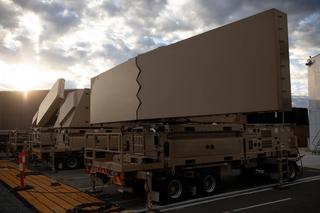
The other major identified outcome was the criticality of GBAD as the foundation of IAMD. A robust GBAD system provides for long-term presence, sensor diversity, distributed fires and depth of magazines. Most importantly, a foundation built around GBAD allows naval and air assets to conduct intercepts or counter-air missions across the entire battle space, providing depth to IAMD and significantly improving force protection and mission outcomes. It dramatically complicates the strike planning of adversaries, including the requirement for greater allocation of resources to achieve reduction/degradation of defensive systems. This also generated a deterrence effect as it improves the inventory imbalance between the adversaries’ strike capabilities and the IAMD capabilities.
The extraction of maximum efficiencies in cost and performance was driven by the need for nations to coordinate the purchase of strategically complementary IAMD systems. The acquisition of complementary capabilities and systems cultivated economies of scale in the supporting defence industrial base, including manufacture, maintenance and sustainability, improving readiness and preparedness. Such an approach also promoted interoperability/interchangeability, generating efficiencies in collective IAMD performance (survivability, situational awareness, etc.) by directing the procurement of national capabilities to meet national strategic needs while also filling coalition capability gaps.
While offering major advantages, this approach still faces constraints, including national needs at the strategic and political levels, which necessitate positioning costly IAMD procurements within national force structures and strategy. Other restraints include the potential for a mismatch between national and Coalition Air and Missile Defence (CAMD) requirements, a trust dilemma in integrating IAMD procurement with allies and partners, a technology and security gap between different allies and partners, national service cultures and approaches to prioritising IAMD and the allocation of budget resources.
Despite these limitations, the sharing and integration of target tracks and data across the represented countries repeatedly emerged as the major priority for the participants, implying the strong viability of track and data sharing arrangements between these states in a conflict situation. The main barrier to this was the development of the ability to undertake track and data sharing in the pre-conflict competition phase. This was assessed as much easier in the US-Australia alliance, given their high level of interoperability based on their mutual security and force protection standards, mutual advanced technology, people-to-people links, and integrated approach to training, operations and doctrine.
The major barriers to effective coordination were the development of policy to address ongoing challenges in internationally coordinating IAMD, including political and technical barriers. The key factor is that, internationally, IAMD cooperation — especially in terms of system interoperability, track and data sharing — offers major advantages for the development of robust A2/AD systems. Efforts to achieve this, however, as demonstrated in recent conflicts in Ukraine and the Middle East, must be offset by the need to start with minimum viable integration and the need to balance integration budget priorities with the need to deliver effective results. Situational awareness is key, but it must be delivered with capabilities to kinetically counter air and missile threats.
Policy development and coordination in AJUS (Australia-Japan-the United States)
Work has also developed tri-laterally in the Indo-Pacific to advance coordination in the Indo-Pacific. The AJUS countries — Australia, Japan and the United States — have agreed to establish a regional IAMD network to develop advanced capabilities. During the Japan Official Visit in April 2024, the United States and Japan announced their intention to partner with Australia to build a regional architecture that incorporates the three countries’ sensors, with plans to test this network during a live-fire exercise in 2027.82 Similarly, the United States and Australia announced during the Australian official visit in October 2023 that they would partner with Japan to develop collaborative combat aircraft that would team with manned fighter aircraft and perform support missions, such as aerial refuelling and intelligence, surveillance and reconnaissance.83 The partners have made incremental yet steady progress toward achieving this capability. This provides an excellent platform to advance regional IAMD coordination.
The state of play in Australia
As noted above, IAMD and especially GBAD have not been a priority for the Australian Defence Force (ADF) since the Second World War. In the post-war period, the Australian military fought under US and allied air superiority or supremacy in campaigns in Korea, Vietnam, Afghanistan and Iraq. The changing nature of the Indo-Pacific strategic environment and the re-posturing of the ADF for potential major conflict in the region have revealed that the ADF’s IAMD capabilities, particularly its GBAD capabilities, are not fit for purpose.
Australia’s flagship capability development program for IAMD is AIR6500. Launched in 2016, the project has undergone several revisions to its design. However, from 2018, it was built around a range of projects, including:
- AIR6500 — Joint Air Battle Space Management Project (JABSM)
- AIR6502 Medium-Range Ground-Based Air Defence
- AIR6503 Advanced Missile Defence System
These projects were designed to complement and integrate with:
- LAND19 Phase 7B Short Range Air Defence (NASAMS)
- SEA400 Air War Destroyer Upgrade
- SEA500 Future Frigate program
- E-7A Wedgetail airborne early warning and control aircraft
These capabilities represented an RAAF-led “project through an Integrated Air and Missile Defence Multi-Domain Program Management Office formed in early 2020.”84
AIR6500 has been designed around a ‘systems-of-systems’ approach — receiving, processing and disseminating data across domains to allow Defence to coordinate air and missile defence operations and to facilitate decision-making. It is an ambitious project aimed at enhancing situational awareness for the ADF, as well as ensuring interoperability with allies and partners.
AIR6500 Phase 1 — JABMS has been the core of the program. Tranche 1 of JABMS has focused on radar deployment, acquiring four Active Electronically Scanned Array radars procured from the Defence-owned Australian CEA Technologies company.85 In April 2024, Defence selected Lockheed Martin as its Strategic Partner to implement AIR6500 Phase 1 Tranche 2 JABMS. JABMS is ultimately the ‘brain of the system’86 and is designed around spiral development, an agile methodology and an open architecture designed to integrate both legacy and new technologies.87 By 2026, it will deliver key replacements to the RAAF’s air surveillance and deployable air traffic control systems.88
AIR6500 Tranche 1 and Tranche 2 have been the focus of the program, leaving AIR6502 and AIR6503 with minimal government funding and, consequently, limited development. Critics of the program today have argued that there is too much focus on situational awareness and battlefield coordination, with AIR6500 promising to solve integration problems across the ADF, and that it is attempting to address issues that the US$141 billion per annum Pentagon investments into research and development have not been able to solve. Questions have also been raised about the slow pace of procuring effectors, with AIR65002 stalled and AIR6503 all but discontinued. The reorganisation of the program in 2024 saw the withdrawal of projects AIR6502 and AIR6503 and their consolidation into AIR6500, which is designed around phases. This has raised further concerns about strategic, capability and budget priorities for IAMD.89 As one commentator has argued, the focus and funding of AIR6500 Tranche 1 and 2 over other programs in IAMD has led to AIR6500 being “effectively toothless.”90
Australia’s strategic policy guidance for Integrated Air and Missile Defence
2023 Defence Strategic Review
In 2022, the Albanese government commissioned former Labor defence minister Professor the Hon Stephen Smith and former Chief of Defence Force Air Marshal (Rtd) Sir Angus Houston to undertake an external review of defence strategy, capability and force posture. The subsequent 2023 Defence Strategic Review (DSR) recommended a range of adjustments to the ADF, starting with the premise that Australia has entered a new strategic era and that the current ADF is ‘not fit for purpose’ in this new age.91
The DSR recommended that the Australian Government adopt a regional balancing strategy focused on collective deterrence in the Indo-Pacific, along with allies and partners, and a military strategy of denial for the ADF. This included a new focus on developing the ADF as an integrated force, building national resilience, establishing a robust northern base network for the ADF to operate from, fielding new capabilities, expanding defence industrial capacity, particularly in guided weapons, and increasing national investment in defence and security.
The ADF’s denial strategy was to be built on the development of key anti-access, area-denial (A2/AD) capabilities for the ADF. In developing this denial approach, the subsequent National Defence Strategy and Integrated Investment Plan in 2024 focused capability development around the ADF’s ability to field and deliver long-range strike capabilities from land, sea and air. To establish capabilities to execute a denial strategy and build an effective A2/AD system, it is just as essential, however, for the ADF to field more defensive-oriented systems, such as IAMD.
For IAMD, the DSR concluded that the approach in AIR6500 was not fit for purpose. The DSR concluded that:
Defence must deliver a layered integrated air and missile defence (IAMD) operational capability urgently. This must comprise a suite of appropriate command and control systems, sensors, air defence aircraft and surface (land and maritime) based missile defences…
Defence’s medium-range advanced and high-speed missile defence capabilities should be accelerated…
While we are supportive of Defence’s approach to developing an ADF common IAMD capability, we are not supportive of the relative priority that the program was given. The program is not structured to deliver a minimum viable capability in the shortest period of time but is pursuing a long-term near perfect solution at an unaffordable cost…
In-service, off-the-shelf options must be explored….
Defence must reprioritise the delivery of a layered IAMD capability, allocating sufficient resources to the Chief of Air Force to deliver the initial capability in a timely way and subsequently further develop the mature capability.92
While the direction and intent of the review are clear, the DSR had one major failing: it left off a specific set of recommendations consistent with the text in the body of the document. The Australian Government’s direction to Defence to focus on the DSR’s recommendations and bureaucratic politics has contributed to a lack of funding for IAMD and an inadequate prioritisation in the 2024 National Defence Strategy (NDS) and Integrated Investment Plan (IIP).
The 2026 NDS and IIP are an opportunity to rectify this erroneous position.
Drafting aside, the intent of the DSR is clear, and the mission essential. The text of the DSR is clear — the current approach is not fit for purpose, and the need is urgent. IAMD must be “accelerated,” the focus must shift to delivering “minimum viable capability,” through “off-the-shelf options.”93
None of this has happened since the DSR was released.
2024 Defence Strategic Guidance
In 2024, the Albanese government produced a range of policy documents to formalise the outcomes of the 2023 DSR. This included a National Defence Strategy, an Integrated Investment Plan, a Defence Industry Development Strategy (DIDS) and a Guided Weapons and Explosive Ordnance (GWEO) Plan.
Upon receiving the 2023 DSR, the Albanese government agreed to 105 of the 108 recommendations.94 The declassified public version includes 62 recommendations, “all of which the Australian Government have either agreed with, or agreed with in-principle.”95 To take formal carriage of the new strategy and develop the Review’s recommendations into government policy, the Albanese government directed Defence to prepare a National Defence Strategy (NDS) in 2024. This document, a recommendation of the DSR, introduced a new structural mechanism for setting defence policy. Gone were the Defence White Papers that had been published at irregular intervals since the early 1970s at the Australian Government’s direction. Instead, the NDS process was to occur every two years, accompanied by a corresponding Integrated Investment Plan (IIP).
The 2024 NDS and IIP with sustainment, operations and workforce support are, in essence, execution documents for the strategy and direction outlined in the DSR.
This is not to say that IAMD and GBAD have only been developed since the DSR. The 2009 Defence White Paper identified “emerging capabilities priorities” that included “ballistic missile defence” with a focus on “examination capability options appropriate to Australia’s strategic circumstances.”96 Four years later, the Gillard government’s 2013 Defence White Paper committed to continuing “to examine potential Australian capability responses.” Interestingly, both White Papers rejected “the development of national ballistic missile defence systems” such as President Donald Trump’s ‘Golden Dome’, arguing that “they would potentially diminish the deterrent value of the strategic nuclear forces of major nuclear powers.”97 Neither of these White Papers raised concerns about cruise missile defence.
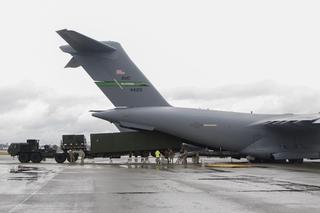
The 2016 Defence White Paper was more expansive. It expressed concern around the “growing threat posed by ballistic and cruise missile capability and their proliferation in the Indo-Pacific and Middle East regions.”98 It recommended Australia “increasingly develop capabilities which can protect our forces when they are deployed across large geographic areas, particularly in air and missile defence and anti-submarine warfare, and better link the ADF’s individual capabilities to each other.”99 It also noted an Australia-US bilateral working group to “examine options for potential Australian contributions to integrated air and missile defence in the region.”100 Four years later, the 2020 Defence Strategic Update stated, “The survivability of our deployed forces will also be improved through new investments in an enhanced integrated air and missile defence system and very high-speed and ballistic missile defence capabilities for deployed forces.”101
Fast forward to the 2024 NDS, and there is little mention of IAMD, and it is not identified as a priority. Instead, strike capabilities or ‘impactful projection’, continuous naval ship building and AUKUS were the main priorities, leaving insufficient funding to prioritise defensive capabilities like IAMD.
In the capability development section of the NDS, IAMD is not part of the Australian Government’s six immediate priorities announced in response to the Defence Strategic Review. Instead, “missile defence to protect critical Defence infrastructure, Defence facilities and the ADF from long-range and high-speed missile capabilities” is listed in capability priorities ‘across the coming decade’, meaning that the urgency listed in the previous strategic guidance, particularly the DSR, was not being actioned and didn’t flow through to the IIP due to funding and capacity offsets.102
There is no mention of GBAD as part of land capability priorities, and the only existing AIR6500 JABMS project is mentioned, “to integrate the ADF’s air and missile defence capabilities.”103 The only other reference to IAMD is in the North Asia strategic environment section: “The Government will continue to strengthen strategic alignment and coordination with Japan including… Advancing our cooperation on integrated air and missile defence, counterstrike, undersea warfare, and increasing Japan’s participation in force posture initiatives in Australia.”104
The 2024 IIP is more expansive, dedicating a whole chapter to IAMD, noting that:105
Military modernisation has enabled more countries to project combat power across greater ranges within our region through advanced long‑range and high‑speed missile capabilities. In this context, our integrated, focused force needs capabilities that can defend against, and reduce the effectiveness of, air and missile attacks.
The 2024 IIP outlines Defence’s layered approach and its current focus on sensors, command and control and integration. The active missile defence measures are limited to upgrades to the Aegis combat system on the Navy’s air warfare destroyers, which will also be fitted to the new Hunter class frigates, to allow integration of SM-2 and SM-6 missiles, and the existing F-35A and F/A‑18F Super Hornet fleets.
This approach leaves critical vulnerabilities in the ADF’s approach to IAMD. Firstly, the focus on RAAF capabilities is both essential and limiting. Without an effective GBAD system, RAAF assets such as F-35s and F/A-18F Super Hornets may be heavily restricted in their mission tasking with an undue emphasis on combat air patrols for air and missile defence missions; missions that would be constrained by fuel and tanker aircraft requirements to sustain defensive combat air patrols. Such an approach would also severely limit the RAAF’s ability to provide deep-strike counter-air missions that add critical depth to IAMD architectures and posture, let alone the limiting effect on other air missions due to availability.
Secondly, the Royal Australian Navy’s (RAN) main IAMD asset — until the Hunter Class frigates, future frigate and autonomous arsenal ships come online in the 2030s — are three Air Warfare Destroyers (AWDs). Like RAAF assets, the best use of these ships is to provide depth in the battle space, situating them as far forward as force protection allows to provide multiple intercept points with their advanced SM-2, SM-3 and especially SM-6 missiles. Point defence of critical infrastructure and assets onshore is a much less effective use of these assets.
Robust GBAD capabilities would enable the RAN’s AWDs to undertake task force and task group missions, protecting other RAN assets or participating in coalition operations across the theatre. Yet, the three RAN AWDs will progressively come offline starting from 2025 to upgrade their combat systems to Aegis Baseline 9 — giving them the capability for ballistic missile defence, integrating the Tomahawk Weapon System, and incorporating Saab’s new Australian combat interface along with several other improvements.106 Given the length of these major upgrades, at least one AWD will be unavailable at any given time over the next few years, with the potential for two or even all three to be in various stages of refit and thus unavailable for operations.
The only mention in the 2024 IIP of GBAD is the NASAMS system, which has already been acquired and is expected to achieve full operational capability in late 2025 or early 2026, as well as the development of the counter-UAS system. Regarding future GBAD priorities or acquisitions, there is no mention of either AIR6502 or AIR6503 or its replacement phases in AIR6500.
The IIP outlined in Table 1 is the proposed investment for IAMD. There is no GBAD list in this table, as all the named areas are either sensors or RAAF projects. This includes up to A$15.39 billion for the RAAF’s JABMS system and only A$3.77 billion for ‘active missile defence’.
Table 1. Australian Government investments in missile defence
The 2024 NDS and IIP have thus downgraded the urgency required in the DSR and previous policy documents dating back almost a decade, at a time when recent and ongoing conflicts have provided the opposite lessons for IAMD and GBAD. As one commentator has noted:107
[The] National Defence Strategy and its associated acquisition plan, the Integrated Investment Program, appear to have cut funding for the surface-to-air systems, the engagement component of integrated air and missile defence (IAMD). While a joint air battle management system will be bought under the previously announced AIR 6500 Phase 1 program, the updated acquisition plan says addition of other active missile defence systems await future consideration ‘as technology matures’.
The NDS and IIP policy platform and investment priorities indicated an almost complete absence of prioritisation of funding for GBAD over the coming decade. This, however, stood in contrast to a couple of other significant developments in 2024 that point to inconsistencies in the Australian Government’s approach to IAMD.
At the 2024 Australia-United States 2+2 Ministerial meeting (AUSMIN), the two countries signed a Statement of Intent on Integrated Air and Missile Defense committing to deliver “near-, mid-, and long-term opportunities for co-development, co-production, and co-sustainment of Integrated Air and Missile Defense (IAMD) capabilities.”108 In March 2024, the RAAF and the RAN provided support to the United States in carrying out an integrated air and missile defence test off the coast of Hawaii, involving the interception of a medium-range ballistic missile (MRBM). Defence noted that “During the test, Australia demonstrated its advanced radar capabilities aboard a Navy vessel, HMAS Stuart, while a RAAF E-7 Wedgetail assisted in data collection and communications.”109 Later that year, in October, Australia signed a A$7 billion agreement with the United States to acquire state-of-the-art long-range missiles, including SM-2 IIIC and SM-6 missiles, for the RAN, thereby boosting naval air and missile defence capabilities, including ballistic missile defence.110 What is clear, though, from these initiatives and the 2024 NDS and IIP, is that the ADF is over-reliant on Air Force and Navy capabilities for IAMD, with land-based systems being almost entirely absent from these developments.
The final pieces of the Albanese government’s 2024 spread of Defence policy documents were the DIDS and the GWEO Plan. The DIDS identified six strategic policy areas, including SDIP 4 — Domestic manufacture of guided weapons, explosive ordnance and munitions. This outlines a policy priority on “the pathway for domestic manufacturing of guided weapons will likely commence with local assembly of imported components and materials” and the “production of explosives and propellants.”111 In addition, the DIDS prioritises the “MRO&U (maintenance, repair, overhaul and upgrade) of priority munitions in Australia, with an initial focus on MK48 heavyweight torpedoes and Standard Missile-2 missiles.”112 This provides Australia with a foundation priority for the sustainment and manufacture of missiles.
This is important, as the 2024 GWEO Plan outlined that the “Investments in missile defence will inform the maintenance of GWEO stockpiles and decisions on integration of missile capabilities into the ADF layered IAMD.”113 It outlined a range of acquisitions and domestic manufacturing developments, including a factory for the Naval Strike Missile and Joint Strike Missile in Newcastle, the production of 155mm artillery shells and GLMRS missiles, and a pathway to develop the Precision Strike Missile. The focus, as outlined in the document, is on long-range strike and GWEO stockpile enhancements. The latter includes AIM-9X-2 and AIM-9X-3 Sidewinder Air-to-Air missiles and AIM-120D Advanced Medium Range Air-to-Air missiles (AMRAAM), both of which can be fired by RAAF aircraft or the NASAMS system, as well as the Evolved Sea Sparrow surface-to-air missiles (ESSM) Block II for the RAN.114
With the current focus on long-range strike, what is missing from the current GWEO Plan is the identification of a surface-to-air/air-to-air missile for local manufacture. This is understandable given that GBAD systems were not identified by the NDS and IPP as a priority, and the sophistication of the seekers and guidance systems in SAM and air-to-air missiles. This, however, represents an opportunity for the 2026 round of policy documents. As the 2024 GWEO Plan states:115
acquisition of new active missile defence systems will be considered as technology matures, including in the context of the 2026 National Defence Strategy, taking into account development in the technology used by the United States and other key partners.
Overall, the outcomes of the 2024 policy guidance are clear. IAMD has not been acted on with the priority allocated to it in the 2023 DSR or in previously strategic guidance going back to 2016. The current investment pipeline massively favours sensors, integration and command and control at the expense of active missile defence. At the same time, it pushes the funding for these capabilities into the latter part of the decade, where funding is only aspirational.
What little active missile defence there is, there is a massive over-reliance on the RAN and RAAF, deprioritising GBAD. On a more positive note, the 2024 round of policy guidance establishes the framework for missile sustainment and manufacture in Australia and provides an opportunity to reprioritise IAMD, especially GBAD, in the 2026 NDS, IIP and GWEO plans.
A new pathway for Australia’s Integrated Air and Missile Defence and Ground-Based Air Defence
The 2026 NDS, IIP and GWEO Plan present an ideal time to reconsider the strategic priority of IAMD, especially GBAD.
Urgent action is required given the rapidly deteriorating strategic environment, lessons from contemporary conflicts, the identified need by the CDF for homeland operations and defence, and the Prime Minister’s commitment to fund defence capability gaps provide for a unique moment in the policy development life cycle.
The 2026 NDS and IIP provide an opportunity to deliver on a new vision for IAMD and GBAD, building on the existing AIR6500, LAND19 and other associated programs for the integrated force.
The focus for this new approach must be on program governance reform, the acceleration of AIR6502 Medium-Range Ground-Based Air Defence, AIR6503 Advanced Missile Defence, and the expansion of the Army’s short-range air defence capabilities to provide more sophisticated, integrated and layered defence.
The focus for this new approach must be on program governance reform, the acceleration of AIR6502 Medium-Range Ground-Based Air Defence, AIR6503 Advanced Missile Defence, and the expansion of the Army’s short-range air defence capabilities to provide more sophisticated, integrated and layered defence.
The principles guiding the approach to acquiring capabilities in IAMD, and specifically GBAD, are based on lessons learned from recent conflicts, which have reinforced the priorities outlined in the 2023 DSR. This drives a focus on:
- Urgency in funding new capabilities now (not in the next decade).
- Allocating sufficient resources to develop an integrated and layered IAMD capability with battle space depth.
- A new approach to Defence’s current AIR6500 program.
- A focus on delivering a minimum viable capability in the shortest possible time.
- Accelerating Defence’s medium-range advanced and high-speed missile defence capabilities.
- Emphasising In-service, off-the-shelf options.
- Acquiring a suite of appropriate command and control systems, sensors and surface (land and maritime) based missile defences.
- Delivering on effective minimal integration to ensure that the most effective use of systems across the domains with effective accountability and funding.
As noted, this report focuses on the development of ground-based systems, as this is the primary gap in the ADF’s IAMD capability.
Retention of key current Integrated Air and Missile Defence capabilities
In crafting a new direction for the ADF’s IAMD and GBAD systems, it is essential that key elements of the existing systems are not lost. Principally, AIR6500 JABMS is an essential requirement. A key priority remains the delivery of the JABMS system, with a focus on replacing the RAAF’s air surveillance and deployable air traffic control systems in the near term.
However, the follow-on elements of the JABMS program will need to be reassessed in terms of budget priority to deliver a more balanced approach. The current imbalance, as stipulated in the IIP, between the JABMS integration project and the delivery of active missile defence is stark and unsustainable, with a ratio of 4:1, A$15.39 billion to A$3.77 billion, in favour of JABMS. This means that the ADF is focused on high-level situational awareness that would allow it to sense and track incoming missiles but have little to no capability to do anything about them.
Upgrades to E-7A Wedgetail AEW&C aircraft and their replacement, as well as upgrades to the Jindalee Operational Radar Network, remain essential components of the ADF’s future IAMD system, but they must be built and prioritised within a new balanced IAMD architecture.
IAMD is a technical problem set that requires a digital-based mission engineering approach, including model-based systems engineering. Defence’s Capability and Sustainment Group (CASG) has rightfully prioritised this. The difficulty with this is that industries are rightfully protective of their intellectual property and, for commercial advantage, seek to achieve vendor and product lock. This requires new approaches to the governance and design of IAMD architecture.
Governance, Integrated Air and Missile Defence architecture and program development
To adopt a new approach to IAMD for the ADF, it is essential to both allocate capability delivery to the services appropriately and ensure coordination and design under a common, integrated framework.
There must be a single overarching authority for the design of the ADF’s air and missile defence architecture. This needs to integrate systems across all five domains: air, land, sea, cyber and space. This must be directed in line with the integrated force’s overarching design developed through the net assessment process, scenario planning and force design principles.
The best way to achieve this is to establish a new IAMD architecture design and integration office in the Joint Capabilities Group. This group, with its inherent joint focus, will provide service-agnostic architecture design around the ADF’s priority theatre missions, aligned with the net assessment process, the force design scenarios and the Headquarters Joint Operations Command (HQJOC) critical capability list. This office must be provided with the requisite staff and funding to develop a short-, medium- and long-term program design and architecture for ADF air and missile defence.
The existing AIR6500 program should remain with the RAAF and be restructured to focus on delivering Tranche 1 and Tranche 2 of the JABMS program, while working to develop and deliver subsequent tranches based on the needs and requirements set by the new architecture design as directed by the Chief of Joint Capabilities (CJC).
The existing AIR6502 and a future ballistic missile defence capability (Patriot) program should be transferred to the Army and incorporated into an expanded LAND19. This will align with the recommendation for medium-range air defence outlined below and capitalise on the existing program management experience within the Army. This would also build on existing personal exchanges between the Australian Army, HQJOC and INDOPACOM.
The current AIR6503 program needs rescoping and development under two lines of effort. Firstly, the integration of RAN AWD, Hunter Class, and General-Purpose Frigate programs into the IAMD missile architecture under CJC. This requires no change to the Navy’s capability ownership of these programs. Secondly, the establishment of a new LAND project for the development of an advanced, short- and medium-range ballistic missile defence capability for the Army. This will enable the ADF to develop two key lines of effort for ballistic missile defence — the Navy’s programs focused on AEGIS and vertical launch missiles, such as the SM-6, and a new land-based solution.
The Army’s current LAND156 C-UAS program should be re-scoped for additional investment under the current development plans, which include its Advanced Strategic Capabilities Accelerator (ASCA) mission. The existing LAND19 Phase 7b must be expanded to accommodate more NASAMS batteries, and additional phases must be added to LAND19 to include new SHORAD systems, as outlined below.
Mid-tier and ballistic air defence
The two largest capability gaps exist in the moribund AIR6502 and AIR6503 projects. The approach outlined below assesses suitable systems based on delivering minimal viable capability in the shortest possible time, ensuring both value for money and development pathways, and integrating systems with the United States, as well as key partners such as Japan. It has also incorporated short- to medium-term development opportunities based on existing or parallel examples.
In assessment system options, this project examined a range of military-off-the-shelf options available. The key systems that meet the requirements and principles outlined above include those listed in Table 2.
Table 2. IAMD off-the-shelf options
Advanced Medium Range Air-to-Air Missile-Extended Range for National Advanced Surface-to-Air Missile System
In addressing the capability requirements in AIR5602 (medium range air defence), the simplest, most straightforward and cost-effective decision is to expand the existing NASAMS system to include AMRAAM-Extended Range (ER) missile. This would involve minimal investment and adaptation. The Australian NASAMS system is already the most advanced in the world, thanks to the integration of the CEA radars.117 This radar is more than capable of being used for the extended-range missile. The kill chain for the AIM-120 is already proven.
The system would require a relatively inexpensive software upgrade and would necessitate the ADF acquiring more canister launchers, Fire Distribution Centres (FDCs) and, most importantly, the AIM-120 AMRAAM ER missiles. To provide additional mobility over time, Defence would be required to work with Thales to adapt the Bushmaster Protected Mobility Vehicle (PMV) to carry the ER missiles, as their length and weight preclude their incorporation into the current Hawkeye vehicles’ solution for the current NASAMS missiles.118
In addressing the capability requirements in medium range air defence, the simplest, most straightforward and cost-effective decision is to expand the existing NASAMS system to include AMRAAM-Extended Range (ER) missile.
Such a solution would present the easiest path given the experience of Thales, Kongsberg, Raytheon and Defence, who are currently working together on this program. This would build on an existing high-performing project. The Australian National Audit Office has assessed LAND19 Phase 7b as on track and expected to “meet capability requirements as expressed in the Materiel Acquisition Agreement.”119
Another option for the ADF to explore would be the extension of the NASAMS system to include the adoption of the SkyCeptor missile. This missile has a range of 200 km, significantly enhancing NASAMS’ effectiveness. The SkyCeptor is combat-proven with the David Sling system and is advanced as a ‘plug and play’ weapon. The SkyCeptor was developed to defeat short- to medium-range ballistic and cruise missiles. Raytheon and Rafael claim it “costs a fraction of other hit-to-kill interceptors,” such as the PAC-3 MSE for the Patriot SAM system.120 Raytheon and Rafael have also proposed to integrate the SkyCeptor with the US Army Patriot launchers.121
Additionally, the NASAMS system is combat-proven and has an exceptionally effective record. Its accelerated technical development, driven by its performance in Ukraine, keeps it on a clear development pathway. Its combat record has demonstrated its adaptability, with indications of a point-defence capability for ballistic missiles that would be enhanced by the addition of a longer-range ER missile.
While SkyCeptor would be a viable option, the adoption of AMRAAM-ER for the NASAMS system represents a fast track to mid-tier capability. It builds on the development of the existing training system and could be readily acquired and fielded. There is no other system that comes close to the cost efficiency and speed of adapting AMRAAM-ER into the existing Australian NASAMS system.
Ballistic missile defence: Patriot missile system
In comparison to the other options that are assessed below, such as the Typhon/Vertical Launch System (VLS) and THAAD options, the Patriot system emerges as the most viable option for the ADF.
The use of a VLS option — a system that operates on navy ships — would require a land-based solution, such as the experimental US Army Typhon system. This system is not a widespread, in-service option, with only two developmental batteries currently being fielded. The system includes large semi-trailer-sized launchers and battery operations centres, severely limiting its mobility and deployability with ADF transport assets.
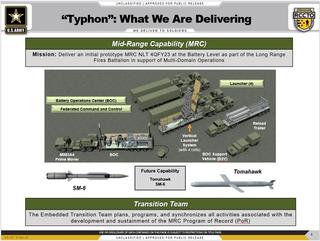
While still in development with the US Army, the Typhon system’s size, limited mobility, cost and complexity have meant that the US Army are heavily investing in pursuing a range of other systems, including an autonomous launcher system. In 2024, the US Army White Paper identified that its longer-term approach to its Indo-Pacific Multi-domain Task forces (MTDFs) would be a mix of both manned and unmanned systems. As far back as 2021, the US Army has focused on the Autonomous Multi-Domain Launcher (AML). Conceived back in 2019, the AML focus is on developing an “autonomous, unmanned, highly mobile, C-130 transportable launcher.”122
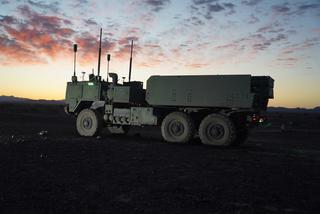
As of 2025, the AML, a system of similar design to the in-service manned High Mobility Artillery Rocket System (HIMARS), has undergone multiple rounds of testing. In June 2025, the US Army released a ‘Request for a Solutions Brief’ to develop two new autonomous launchers. This includes a Common Autonomous Domain Launcher-Heavy (CAML-H) capable of launching surface-to-air missiles, such as the PAC-3 and Tomahawk land-attack missiles. Operational Assessments will be scheduled 18 and 24 months from the date of award. While this remains a future possibility, both the AML and CAML-H, like the Typhon remain in development.123 While it is most likely that the AML/CAML-H will supersede the Typhon land-based VLS system, neither represents a military off-the-shelf (MOTS) option.
AEGIS ashore system consists of AN/SPY radar, “located in a deckhouse that also supports the system’s command and control capabilities [with] Co-located…e fixed launchers for the current version of the SM-3 ballistic missile interceptor, the Block IB, as well as SM-6 air defense missiles.”124 The main issues with this system are its costs, limited development, and that it is a fixed system, negating mobility. Recent conflicts have demonstrated the vulnerability of fixed systems, and the cost was the principal reason for Japan suspending its development of this program. The two sites for Japan were to cost approximately A$1.367 billion each, with the total cost of the system coming to A$4.55 billion.125
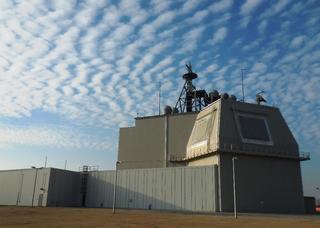
The THAAD system comprises missiles, ground-based radars (GBR), mobile launchers, support equipment, and a command-and-control centre. It is a more high-end, limited availability, and more cost-prohibitive system. Its approximate life-cycle cost is US$23 billion.126 It is limited in applicability to BMD, and the cost per missile is exceptionally expensive. A single interceptor costs between US$12 million and US$15 million.127 It is mainly used in the United States as part of the missile defence shield, known as the Golden Dome, for theatre ballistic missile defence aimed at deterrence against rogue nuclear missile strikes by countries such as North Korea.
In comparison to other options, the Patriot missile system offers the best MOTS option for medium-range air defence and defence against short- and medium-range ballistic missile defence, as well as manoeuvring hypersonic missile defence.128 Unlike most other options, it is an in-service and off-the-shelf option, offering a combat-proven record, a continuing development cycle and a relatively cost-effective system (compared to other options). Patriot can fire a range of missile options from the shorter-range PAC-2 and intermediate PAC-3-CRI, and the longer-range PAC-3 MSE.
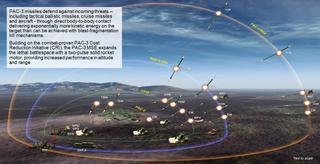
In 2024, the US Army abandoned its development of the Patriot replacement, the Lower-Tier Future Interceptor initiative, due to high costs.129 It instead invested in upgrades to the Patriot system, particularly the PAC-3 missile.130 This is particularly important as the 2024 Australian strategic guidance noted that future decisions on “new active missile defence systems… in the context of the 2026 National Defence Strategy” will take into account development in the technology used by the United States and other key partners.131 What is clear since the 2024 NDS and IIP is that the US military, as well as other countries around the world, have doubled down on the continual development of the combat-proven Patriot missile system, particularly through the PAC-3 missile.
The PAC-3 provides up to four times the firepower compared to the PAC-2 family of missiles. The PAC-3 CRI and PAC-3 MSE provide high load-out configurations and enable defence against mass raids. The new M903 launcher allows for a mix of PAC-2 and PAC-3 missiles.132 A 2024 test suggests that the Patriot PAC-3 MSE air defence missiles could be fitted to the Navy Mark 41 vertical launch system.133 The PAC-3 MSE missile is an effective countermeasure to short- and medium-range ballistic missiles, such as the DF-26 and DF-27.134
Patriot also offers a viable option for future GWEO plans. This is not only due to global demand but also because Japan currently assembles PAC-3 missiles. Additionally, Japan has entered into a new co-production agreement with the United States, which was announced not long after the release of the Australian 2024 NDS on 28 July 2024.135
Rapidly acquiring the US Patriot system with PAC-2, PAC-3 CRI and PAC-3 MSE missiles for the Australian Army would deliver an enhanced off-the-shelf mid-tier air defence and BMD capability.
It would provide for full interchangeability with the United States. Australia would be entering a system used globally, including by Japan. Additionally, this would build on the nascent capabilities already existing within the ADF, as Australia already has a high degree of experience with the Patriot system through its exchanges with the US military, particularly with INDOPACOM. Australian personnel on exchange have trained with this system, and exchange in IAMD personnel means that Australia is the only nation certified to fire the US patriot system. This was demonstrated during Exercise Talisman Sabre 2025 with a live fire of the Patriot system.136
As noted, Patriot is undergoing a range of current upgrades with the US Army, particularly for its radar system and the ongoing missile development. This presents a potential opportunity to explore options for integrating the Australian CEA radars into the Patriot system. This would be a development opportunity, meaning Australia would have to incur costs for integration and kill chain assurance, and navigate the US policy environment. However, such an option could not only enhance interoperability between the Australian NASAMS system and the Patriot system but also provide for a potential export market for Australian industry, given the high number of Patriot users worldwide.
This could also lead to an opportunity for integrating Patriot launchers and missiles into the Australian NASAMS Fire Distribution Centres (FDC). This would enhance system integration, enable the reduction of workforce requirements, and facilitate the deployment of mixed batteries comprising NASAMS (with AIM-9x, AMRAAM and AMRAAM-ER) and Patriot missiles and launchers. In the future, an Australian Patriot system, either a MOTS system from the United States or an adapted system along the lines above, could include the adoption of the next-generation US Army autonomous launching system once it is mature.
Improving Short Range Air Defence (SHORAD)
Recent conflicts have demonstrated the need for a layered GBAD system. This starts with the requisite quality and quantity of systems for SHORAD. Defence’s direction for the Army to be capable of deploying forces into the littoral regions to Australia’s north, as well as for homeland defence across a range of different levels of conflict demands force protection against UAV, missile and aircraft threats. The Army’s LAND156 program is due to deliver a C-UAS for Class 1, 2, and 3 systems before the end of the year.137 This innovative program design, however, must be re-scoped in the next NDS and IIP to ensure it provides the necessary volumes of C-UAS systems for the integrated force.
To provide additional depth to SHORAD, the fastest and easiest solution at the high end is to expand the current world-class Australian NASAMS system to include additional batteries with the requisite launchers, FDCs, missiles and personnel. This should include a dedicated inventory allocation of AIM-9x Sidewinder missiles for the Army’s NASAMS.
However, NASAMS and LAND156, in and of themselves, do not provide a total solution. There are several in-service, off-the-shelf options that Defence should consider adopting. For a short-range missile system, the most easily adaptable, relatively low-cost, and versatile solution is the FIM-92 Stinger missile.
The base FIM-92 Stinger is a man-portable air defence system (MANPADS). The Stinger SAM offers supersonic speed and agility and “can be deployed for defence against all classes of helicopters, unmanned aerial vehicles (UAVs), cruise missiles, as well as low-level fixed and rotary-wing aircraft.”138 It is a combat-proven and tested system that has proven especially effective in Ukraine. It is used by over 30 countries, including NATO members, and can be integrated onto a range of vehicles and helicopters.
The adoption of the Stinger missile would provide options to equip a range of the Army’s vehicles. As outlined above, one of the most recent successful mobile SHORAD options has been the US Army’s rapidly developed system, the M-SHORAD platform, which integrates a gun system and Stinger missiles onto a Stryker vehicle. A clear pathway of development could be the integration of the Stinger into the Boxer Combat Reconnaissance Vehicle (see below), and the development of a remote weapons station and Stinger missile combination in the Army’s Bushmaster PMV, replicating the US Army’s Avenger System and/or M-SHORAD Striker vehicle system.
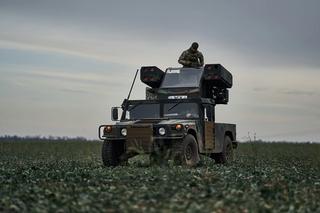
The Australian Army is currently bringing into service a best-in-class Combat Reconnaissance Vehicle (CRV) through LAND 400 Phase 2. This is based on the Rheinmetall Defence Australia Boxer CRV, which is contracted to deliver and support 211 Boxers for the Australian Army. The Boxer CRV can also come equipped with a Skyranger Turret with either 30mm or 35mm cannon options. This option is in-service and off-the-shelf.139
“Skyranger 30 was developed to counter drones, fixed-wing aircraft, helicopters, cruise missiles, and loitering munitions under networked or autonomous controls…[and] has a firing rate of 1,200 rounds per minute and an effective range of 3 kilometers.”
The Skyranger has been integrated into the NASAMS FDC since 2019, providing high levels of interoperability and integration with existing Army systems. It can also carry two to four short-range surface-to-air missiles, including Stinger.140 This system is in service with nations such as Germany, Austria and the Netherlands and is currently undergoing major expansions and acquisitions.
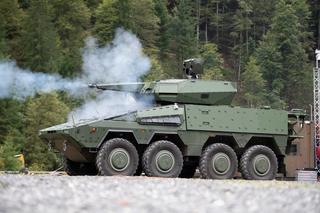
Introducing Skyranger air defence turrets onto the Australian-built Boxer Combat Reconnaissance Vehicles would provide a mobile C-UAS and air defence solution to the Army’s mechanised combined arms teams and for broader air defence missions.
Force structure and workforce implications of Ground-Based Air Defence
The development of these programs, as outlined above, would have major repercussions for the Army’s force structure at a time of intense workforce pressures. It would require the expansion of the Army’s 10th Brigade to include at least one additional Air Defence Regiment and potentially two, depending on the configuration of expanded NASAMS and Patriot systems. It will require the reallocation of people within a constrained budget and workforce profile.
These changes would align with the firm direction from the 2023 DSR and the mission requirements outlined for the Army. It meets the strategic need to adapt the Defence of Australia and Theatre Mission 1 for the ADF to protect the homeland and would provide direct support to the operations of the Army’s 1st Australian Division in the region. Thus, it is a priority both in the existing force and in plans to grow and expand the Army and the ADF. These are the types of changes and requirements necessary to support deterrence and the regional strategic balance in the Indo-Pacific.
In meeting force structure and workforce requirements, the Army should develop clear pathways and options to expand the air and missile defence workforce through the integration of reserve force soldiers into the system. NASAMS was designed in Norway to operate with a conscripted workforce, and there are clear roles and tasks that can be used in the reserve force. The US Army National Guard have operated Patriot battalions since 1995 (they also operate NASAMS in the US National Capitol region).141 This is a system adopted by other nations around the globe. Exploring hybrid workforce options with Army Reserves is also an identified mission of the Army’s 2nd Division.
Opportunities for Guided Weapons and Explosive Ordnance
To ensure a holistic approach to IAMD, there must be a strategy for the integration of surface-to-air missiles into the Australian Government’s domestic missile production plans. The Statement of Intent on Integrated Air and Missile Defence signed at the 2024 AUSMIN meeting provides a strong political and policy foundation for the expansion of Australia’s domestic supply, assembly, production and sustainment of advanced surface-to-air missiles. There is now a significant opportunity for future GWEO plans to incorporate the addition of a SAM through the production of key componentry, missile assembly and potentially whole missiles.
Such an approach would improve local and regional missile readiness and preparedness for the ADF, US Forces and regional partners by developing Australia as a regional hub for the maintenance and sustainability of surface-to-air missiles. This could be achieved through the maintenance and certification in Australia of test and evaluation capabilities for AIM-120 AMRAAM family of missiles (used by the RAAF and the NASAMS System) and the Patriot PAC-2 and PAC-3 missiles.
To ensure a holistic approach to IAMD, there must be a strategy for the integration of surface-to-air missiles into the Australian Government’s domestic missile production plans.
This is not without some precedent. The co-production agreements with Japan and the United States for AIM-120 and Patriot missiles provide Australia with an entrée and an opportunity to expand GWEO engagement with the United States on SAM systems. Australia’s more sophisticated and advanced security settings and relationships with the United States, including the AUKUS export control reforms, and its Five Eyes security membership, provide a basis for expansion and exploitation that does not exist with Japan.
The key to expansion into these areas would be the Australian adoption of NASAMS with AMRAAM-ER, AMRAAM and AIM-9X Block 2 and Patriot systems and then working to identify, in collaboration with the US Government and industry, key supply chain blockages in areas such as seekers, warheads, and/or guidance systems for either the AIM-120 or the PAC-3 missiles, allowing Australian companies to complement US production. This would build on Australia’s current plans to develop a solid rocket motor production facility. It also builds on the Venn diagram of opportunity for the Australian GWEO enterprise — namely, ADF demand for the missiles, a global supply chain shortage, opportunities to supplement US production, and the ability to service export markets.
Advanced Strategic Capabilities Accelerator and Defence Science and Technology Group: Advancing Integrated Air and Missile Defence technologies
Advanced science and technology play a critical role in the development of asymmetric capabilities for the ADF and support for the critical capabilities of the integrated force. ASCA is firmly embedded in supporting the delivery of LAND156 C-UAS program, but there are a range of further opportunities to explore.
The most important of these is reducing the cost curve for the intercept of UAS systems as well as cruise and ballistic missiles. At the forefront should be programs that focus on the development of laser and microwave systems, as well as a low-cost interceptor. These should be priorities for ASCA, Defence Science and Technology Group (DSTG),142 and collaboration with allies and partners, such as through AUKUS Pillar II. Other key areas of potential include the application of AI to IAMD, especially for analysing and interpreting track data, and target identification for missile intercept allocation.
Conclusion
Global events have underscored the need for effective GBAD as part of a layered and integrated IAMD system. The lessons from the Houthis’ attacks in the Middle East and the Red Sea, the war in Ukraine, the Israel-Iraq conflicts, Gaza and the India-Pakistan conflict in 2025 all demonstrated that the modern missile age, supplemented by the proliferation of cheap drones, has arrived. No longer is IAMD just about high-end potential adversaries, as offensive missile systems and drones are becoming ubiquitous to a range of states and non-state actors. This is making the need for integrated air and missile defence more critical than ever.
Homeland defence is now a key imperative for the ADF and the Australian Government, especially as the risks of potential high-end conflict in the Indo-Pacific rise. The massive expansion of UAS systems and cruise and ballistic missile capabilities in the Indo-Pacific region must be countered in a timely manner to provide for effective deterrence and to deliver capabilities to the ADF to execute an effective denial strategy in the event deterrence fails.
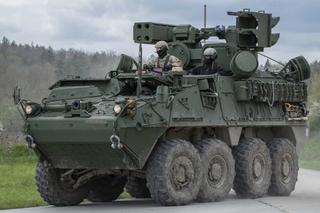
In addition, in the current competition phase in the region, the ADF will need to demonstrate an ability to undertake effective IAMD for critical infrastructure, the ADF’s northern base network and the AUKUS Submarine Rotational Force West. If it is not perceived as likely to be effective, it is not a credible element of effective deterrence.
The most effective and cost-efficient approach to improve the ADF’s current IAMD capabilities is to focus on GBAD, given its ability to scale and maintain an enduring presence. Such an enhancement of the Army’s capabilities will allow the RAAF and RAN to provide both layered and in-depth IAMD, prosecute counter-air missions, and avoid severely limiting theatre force employment options. The worst possible option is to have the RAAF and RAN continue to provide ‘goal line’ defence in IAMD due to the lack of the right type and quantity of land-based systems. This is the current state of the ADF IAMD capabilities.
There is also a clear national need for enhanced GBAD.
While there will never be enough systems to provide comprehensive defence of even northern Australia, an expanded GBAD capability is essential for both national resilience and the Army’s ability to operate in the ADF’s primary area of military interest, from the northwest Indian Ocean through maritime Southeast Asia to the Pacific.
Australia must provide for enhanced self-reliance in the defence of Australia. It is not sustainable to rely on US force posture in Australia in a high-end contingency or in competition.
The United States is currently massively expanding its own air and missile defence capabilities, like other states around the globe. The US Army air defence batteries and battalions remain the most deployed assets in the force, as they have been over recent decades. As demonstrated by the Trump administration in 2025, despite the Indo-Pacific being identified as the priority theatre, a Patriot air defence system and a US carrier battle group were deployed outside the theatre in response to an external crisis.
An appropriate allocation of urgency and funding, coupled with a new approach to the governance of IAMD architecture and a practical and sensible approach to GBAD, would lead to a rapidly expanded capability for the ADF. This paper has addressed options based on principles that support the strategic direction outlined in the 2023 DSR, which has become even more pressing in the two years since its release.
These options include the exceptionally logical, cost-effective and rapid ability to expand mid-tier air and missile defence through the expansion of the current NASAMS capability, the inclusion of AMRAAM-ER and the potential to integrate the SkyCeptor missile into this system. The adoption of Skyranger turrets already integrated into NASAMS also provides for a logical Very Short Range Air Defence (VSHORAD) solution. The selection of the ubiquitous and proven Stinger missile for the ADF and its integration into existing platforms in the Army, such as the Bushmaster PMV and the Boxer CRV, also provides a rapid, logical and low-cost expansion of GBAD covering C-UAS to cruise missiles and general air defence.
The adoption of the Patriot missile defence system would not only expand medium-range air defence but also provide a system that can counter short and medium-range ballistic missiles and hypersonic missiles. These options provide a pathway for enhancing alliance integration, closer ability to partner with key countries such as Japan and a pathway for GWEO development. They also provide a platform for a range of capabilities, advanced science and technology, and development.
The keys to a modern IAMD architecture are a range of mutually supporting systems that cover the entire spectrum, from C-UAS to ballistic missiles; otherwise, the system’s weaknesses are ruthlessly exposed in any combat situation.
As this paper has shown, the keys to a modern IAMD architecture are a range of mutually supporting systems that cover the entire spectrum, from C-UAS to ballistic missiles; otherwise, the system’s weaknesses are ruthlessly exposed in any combat situation. The more integrated this system is within the integrated force and with allies and partners, the better the system will perform.
This is a clear capability gap for the ADF. Prime Minister Anthony Albanese has constantly reiterated that he is looking in the next NDS and IIP to fund real capability and capability gaps. The GBAD element of IAMD stands alongside other key capability priorities such as AUKUS submarines, the recapitalisation of the Navy, the development of long-range fires and the GWEO enterprise. IAMD is a critical element of deterrence, has a major role to play in Australia’s alliance contribution with the United States, provides depth to national resilience and delivers on infrastructure and population protection for the homeland. Few capabilities contribute across the full spectrum of defence capabilities and tasks like IAMD. It is an essential element in the modern defence of Australia, of which the Albanese Labor government has championed.
The next NDS and IIP provide an opportunity for the Albanese government to rapidly fill this capability gap and deliver on its number one priority: the safety and security of Australia.
The production of this report was supported by Thales, Raytheon and Lockheed Martin as part of a research partnership.
